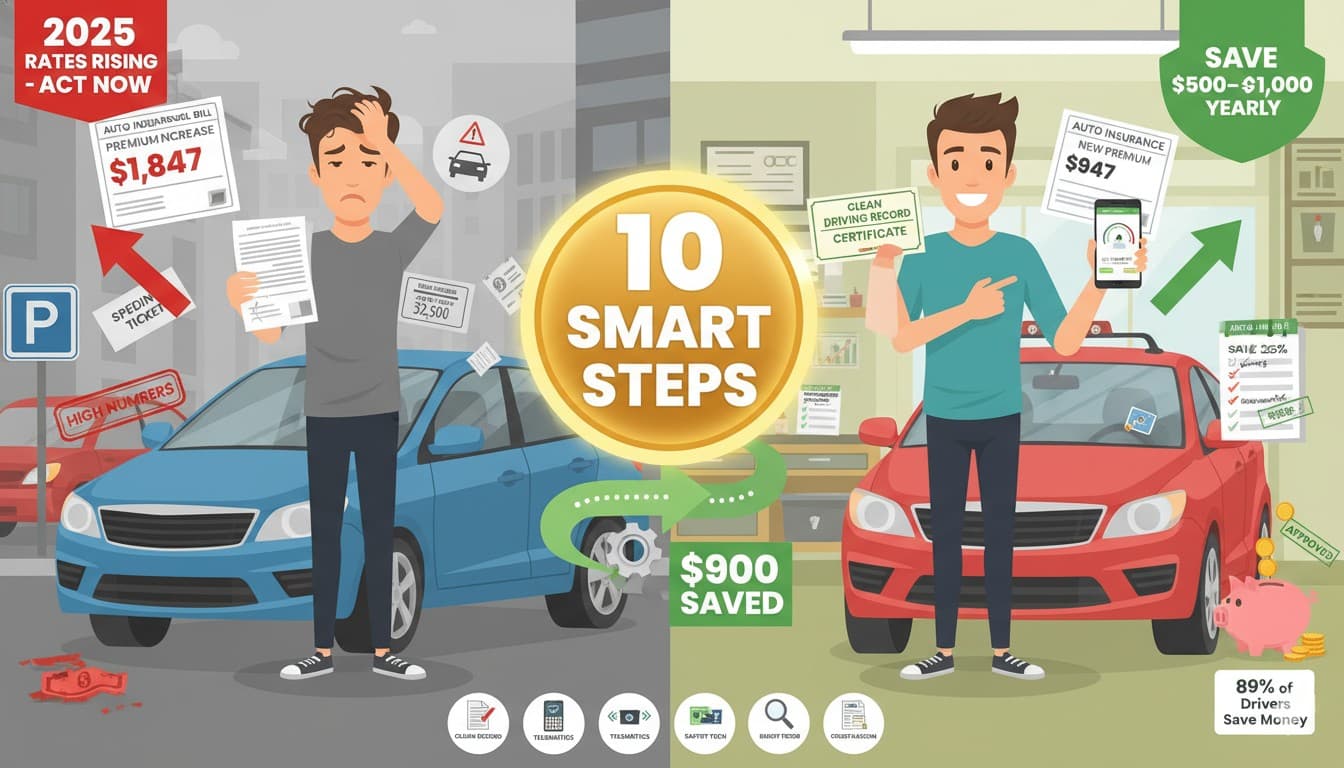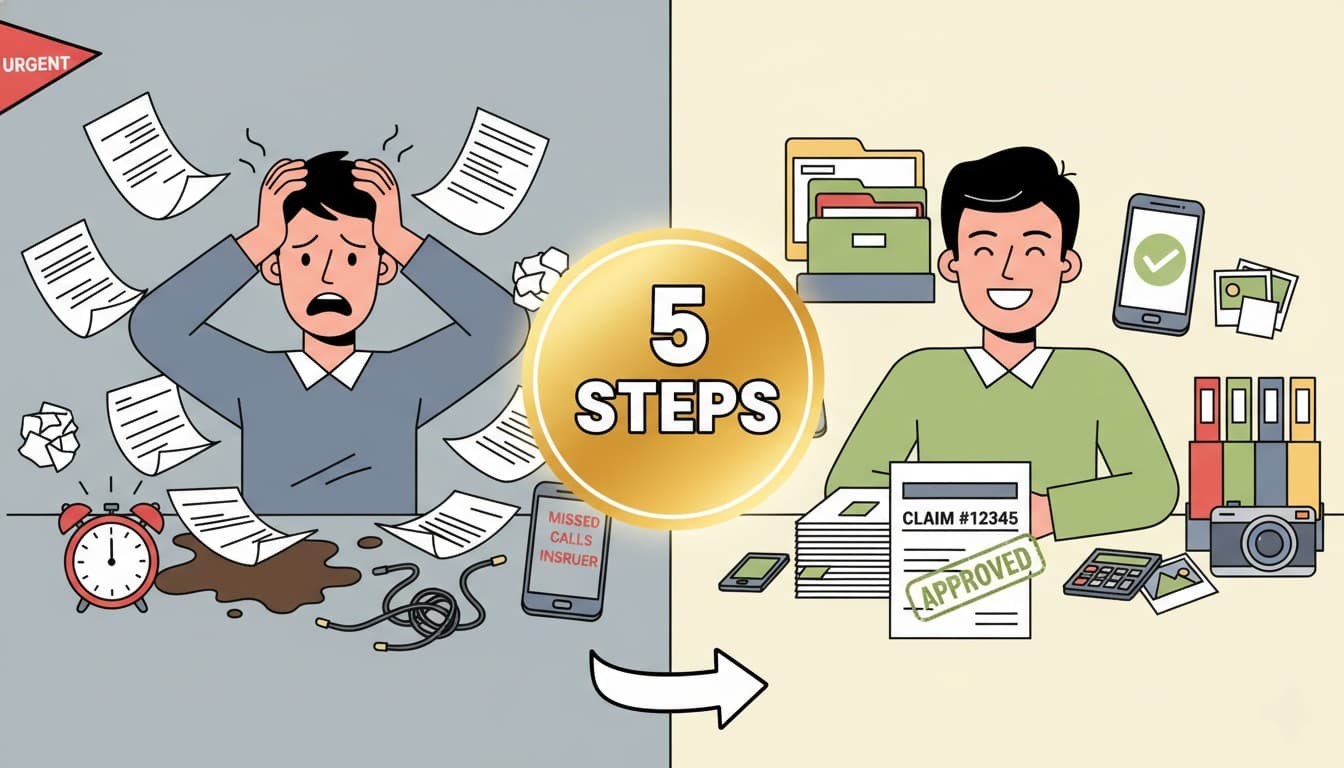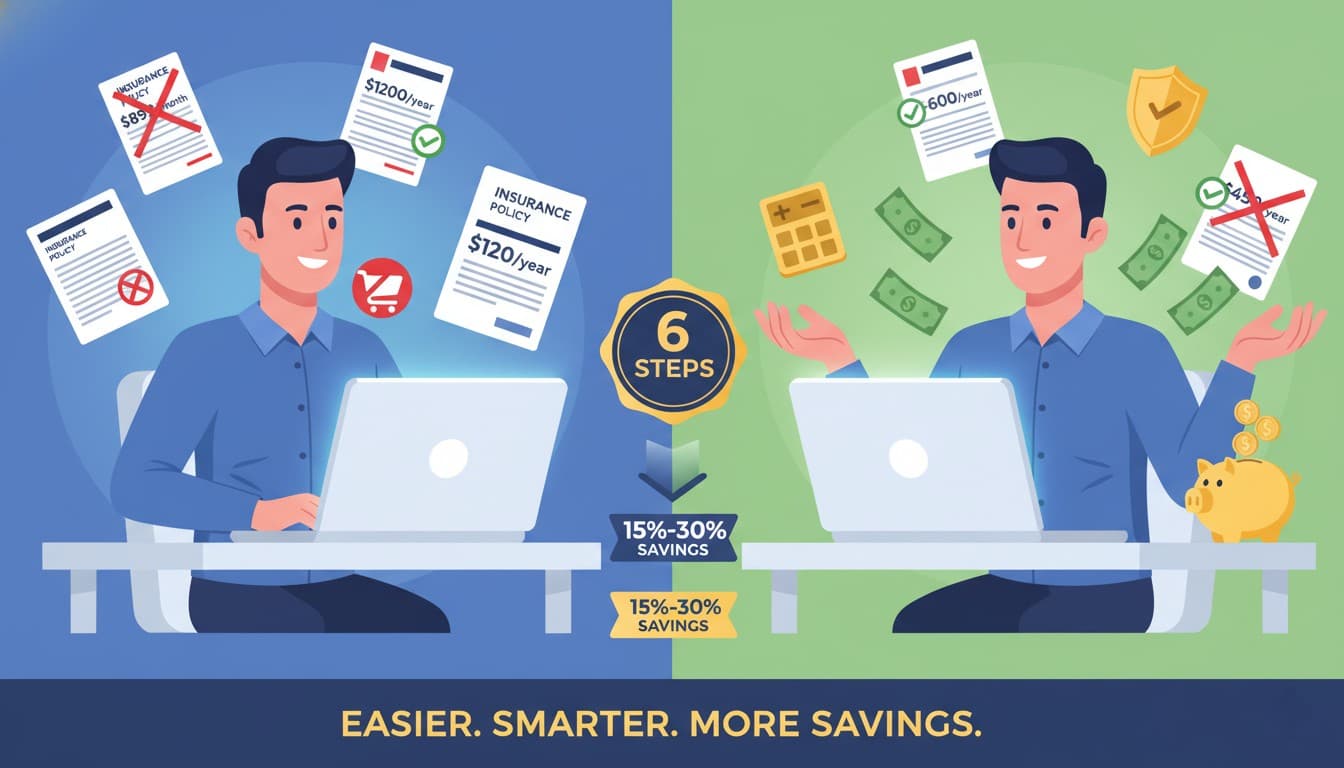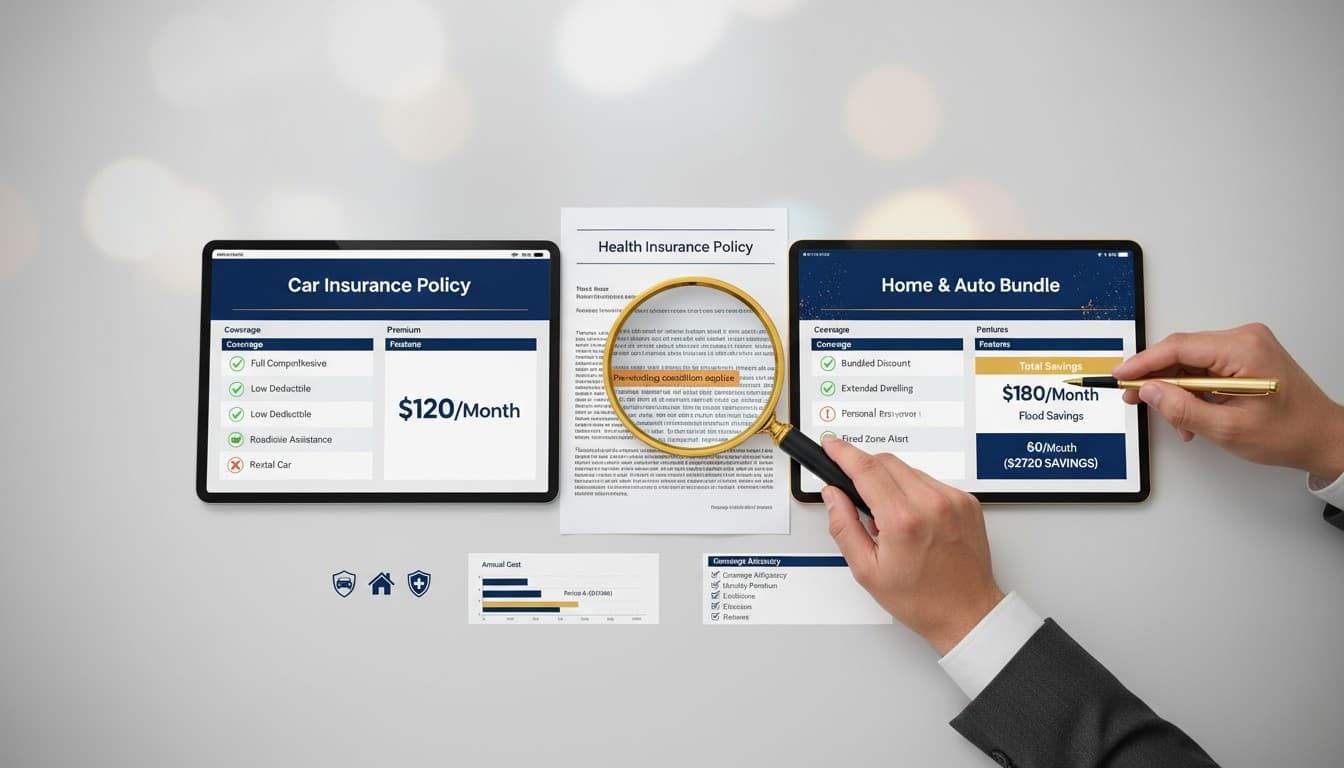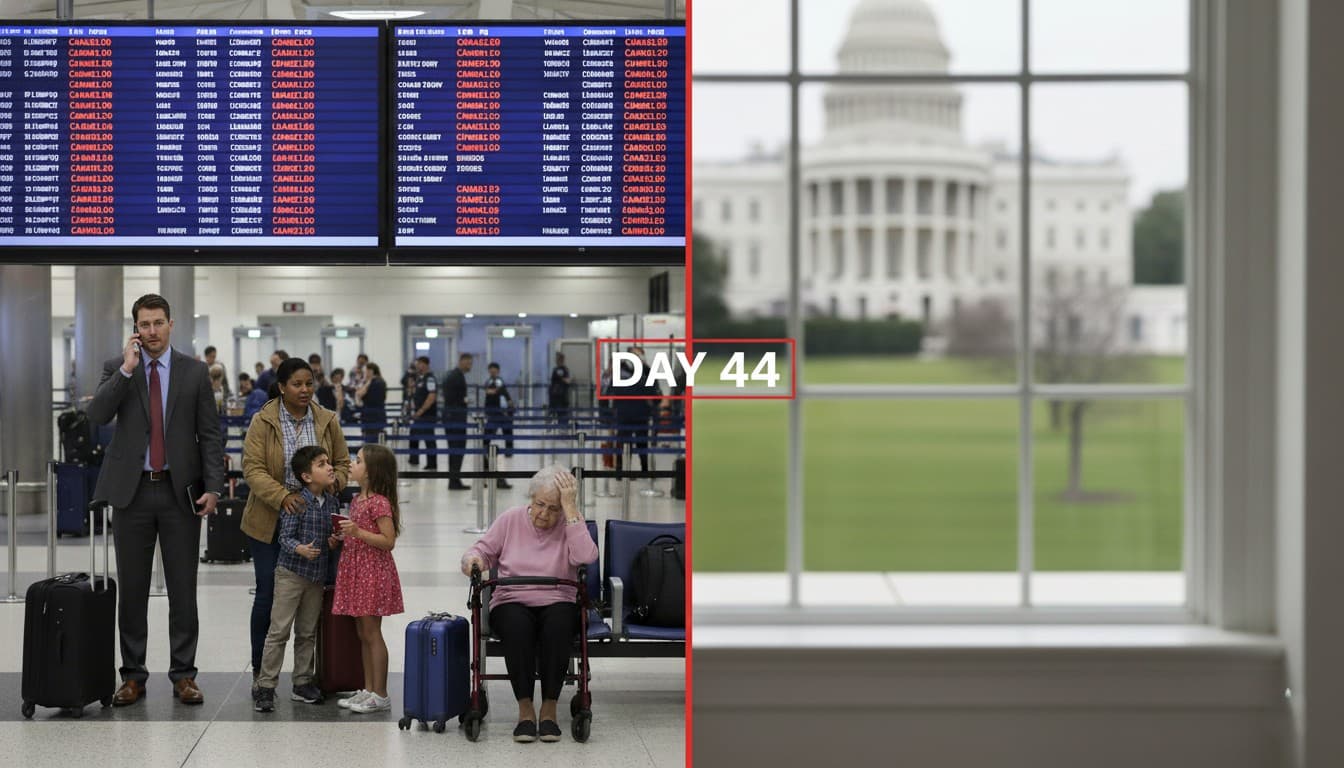Let me guess - you opened your car insurance renewal notice last month and thought "Wait, it went up AGAIN?" Yeah, me too. And like most people, you probably felt stuck. Insurance is required by law, so what choice do you have?
Turns out, you have way more control than you think. I spent the last few months digging into what actually drives insurance rates up and down, talking to agents, and testing different strategies. What I found surprised me - small changes can make a real difference in what you pay.
Whether you're stuck in LA traffic every day, only drive on weekends in Orange County, or work from home in the Bay Area, these ten practical steps can help you lower your premiums without cutting coverage or spending hours on the phone.
Step 1: Keep Your Driving Record Clean (This One Really Matters)
I know, this sounds obvious. But here's what most people don't realize - even one minor ticket can bump your premium up 10-20% for the next three to five years. That $200 speeding ticket? It might actually cost you $800+ in higher insurance over time.
Your driving record is basically your insurance report card. Insurers look at it first, and everything else second.
Here's a trick most people miss: If you do get a minor violation, don't just pay the fine and move on. Many states let you take an approved defensive driving course to either remove the ticket from your record or convince your insurer to waive the surcharge.
Mia from Sacramento did exactly this. She got popped for speeding on I-5 (15 over, nothing crazy). Instead of just accepting the higher premium, she took a 6-hour online defensive driving course on a Saturday. Cost her $40 and one weekend morning. Her insurer waived the surcharge completely - saving her $280 that year alone.
The math on that is pretty good. Six hours of boring videos for $280? That's like earning $47 an hour.
Step 2: Be Completely Honest on Your Application (Even the Small Stuff)
This one makes people uncomfortable, but it's important. A lot of drivers "round down" their annual mileage or fudge details about where they park, thinking it's no big deal.
Bad idea. Modern insurance companies cross-check everything - DMV records, telematics data, even public databases. And if they catch inconsistencies when you file a claim, they can deny coverage entirely. Not worth it.
But here's the thing - being accurate can actually SAVE you money if you're doing it right.
Details that can lower your rate:
- If you drive less than 7,500 miles a year, make sure that's on your application - low mileage gets discounts
- If you park in a garage or covered driveway (not street parking), say so
- Your job title matters - "Graphic Designer" might rate as lower risk than "Artist" even though it's basically the same job
James from Irvine learned this when he went from full-time office work to hybrid. He used to commute 45 minutes each way, five days a week. After switching to 2 days in office, his annual mileage dropped from 18,000 to 8,500.
He called his insurer to update it, expecting maybe a small discount. His premium dropped 18% - over $400 a year. For a five-minute phone call.
Step 3: Try Those Telematics Apps (They're Less Creepy Than You Think)
Full disclosure - when I first heard about insurance companies tracking my driving with an app, I was skeptical. Big Brother vibes, you know?
But programs like Progressive Snapshot, State Farm Drive Safe & Save, and Allstate Drivewise can save you serious money - anywhere from 10% to 40% - just for driving the way you probably already drive.
They track things like:
- How smoothly you brake (no slamming on brakes)
- How fast you accelerate (gradual is better)
- What time of day you drive (late night is higher risk)
- How many miles you drive
If you're already a cautious driver, this is basically free money. Carlos from Fresno was nervous about it at first, but he drives pretty carefully anyway. He signed up for his insurer's program, kept driving normally, and at renewal got a 25% discount. That's $480 a year for him, just for letting an app run in the background.
The privacy concern: Yes, they're tracking your driving. If that bothers you, don't do it. But they're not tracking WHERE you go or sharing your data with anyone else - just monitoring your driving habits to calculate your discount.
Step 4: Add Safety Tech to Your Car
This is where car insurance gets kind of fun. Insurers will literally pay you (via discounts) to make your car safer and harder to steal.
Dash cams, alarm systems, GPS trackers, anti-theft devices - these all reduce the insurer's risk, so they reduce your premium. Plus they give you actual protection and can speed up claims.
Before you buy anything, call your insurer and ask: "Which specific devices qualify for discounts?" Not all of them do, and you don't want to spend $200 on a system that doesn't actually lower your rate.
A driver in San Diego installed a $100 dash cam after hearing horror stories about "he said, she said" accident disputes. Three months later, someone rear-ended him at a stoplight. The other driver tried to claim HE had backed into them (yes, really).
The dash cam footage showed exactly what happened - stopped at red light, other car didn't stop, clear rear-end collision. His claim was processed in five days instead of five weeks, and because fault was crystal clear, his rates didn't budge.
That $100 dash cam saved him weeks of hassle and potentially thousands in higher premiums if fault had been disputed.
Step 5: Review Your Coverage Every Single Year
Here's something that trips up a lot of people - they set up their insurance when they buy a car, then just keep auto-renewing without looking at what they're actually paying for.
Cars lose value fast. If your vehicle is getting older and is now worth less than 10 times your annual premium for collision/comprehensive coverage, you might be paying for protection that doesn't make financial sense anymore.
Jane had a 2010 Honda Civic worth about $3,500. She was paying $480 a year for comprehensive coverage on it. Think about that - she was spending almost 14% of her car's entire value every year just on that one coverage type.
She did the math and realized if she dropped collision and comprehensive (keeping liability, obviously), she'd save $400 annually. Even if her car got totaled, she'd save enough in two years to almost buy another one.
She dropped it. Three years later, no accidents. She's saved $1,200 - enough to buy a better used car than the one she had insured.
The rule of thumb: If your car is worth less than $3,000-4,000, consider dropping collision and comprehensive. Keep liability - that protects you from other people's claims and is required by law.
Step 6: Bundle Everything You Can
If you rent an apartment, own a condo, or have a house, combining that insurance with your auto policy is one of the easiest wins.
Bundling typically saves 10-25% across your policies. Plus you only deal with one company, one renewal date, one customer service number. Life gets simpler while your bill gets smaller.
The Tran family from San Mateo had their home insurance with one company ($1,400/year) and auto with another ($1,600/year). They'd been with both companies for years and never thought about it.
Their neighbor mentioned bundling, so they got a quote from a company that offered both. The bundle quote came back at $2,470 for both policies - a $530 annual savings. Same coverage, less money, easier management.
They switched and set a reminder to compare quotes again in a year. Because here's the secret - the "bundle discount" sometimes shrinks over time as the base rates creep up. Stay vigilant.
Step 7: Pay the Whole Thing Upfront (Or at Least Go Paperless)
Most insurance companies charge small "installment fees" if you pay monthly - usually $5-10 per month. Over a year, that's $60-120 you're paying just for the convenience of spreading out payments.
If you can swing paying the full six-month or annual premium at once, do it. You'll save 5-10% on average.
"But I don't have an extra $1,000 sitting around," you might say. Fair. Here's the workaround: some credit cards offer 0% APR for 12-15 months. Pay your annual premium on the card, then pay off the card in monthly chunks during the promotional period.
You get the upfront payment discount without the cash flow hit. Just make absolutely sure you pay it off before the promo period ends, or the interest will eat your savings.
Can't do that either? At minimum, sign up for autopay and paperless billing. Most insurers give small discounts for both - maybe 2-5% combined, but it's something and requires zero effort.
Step 8: Compare Rates Before EVERY Renewal
This might be the most important one. Insurance pricing changes constantly based on factors you can't even see - the company's overall claim costs, their marketing goals, changes in actuarial models, even the weather patterns in your region.
Your rate can go up even if nothing about you or your driving changed. And new companies are always trying to steal customers with better introductory rates.
Rosa from Glendale had been with the same insurer for eight years. She was a loyal customer, never filed a claim, and assumed that loyalty was being rewarded with good rates.
On a whim, she spent 15 minutes getting quotes from three other companies. One of them offered identical coverage for $37 less per month. Exact same deductibles, same coverage limits, everything.
She switched. That's $444 a year for 15 minutes of work. Not bad.
Use comparison tools - there are free online ones that show you multiple quotes side-by-side in minutes. No impact on your credit score, no commitment. Just information.
The insurance industry is betting you won't do this. Prove them wrong.
Step 9: Think Twice Before Filing Small Claims
This one's counterintuitive. You pay for insurance, so you should use it for every little thing, right?
Actually, no. Filing frequent small claims can raise your rates for the next 3-5 years, and it can cost you your "claims-free" discount, which is often substantial.
The rule: If the damage costs less than twice your deductible, seriously consider paying it yourself.
Example: You have a $500 deductible and someone dings your bumper. Repair cost: $800. If you file a claim, you pay $500 and insurance pays $300. But that claim might raise your premium by $200/year for three years - costing you $600 total.
Better to just pay the $800 yourself and keep your clean record.
Obviously, for big claims (major accidents, totaled vehicles, injuries), absolutely file. That's what insurance is for. But those little $600 repairs? Might be smarter to eat the cost.
Step 10: Work on Your Credit Score (Yes, Really)
This one surprises people, but in most states, your credit score significantly affects your car insurance rate. Insurers have found a correlation between credit score and claim frequency (whether that's fair is debatable, but it's reality).
Ethan discovered this when he spent a year improving his credit. He paid down credit card debt, disputed an error on his credit report, and made all payments on time. His score jumped from 670 to 760.
When his car insurance renewed, he noticed something weird - his premium dropped $190 for the six-month policy. He called to ask why. The agent confirmed: "Your credit score improved significantly. That qualified you for better pricing."
Same car, same driving record, same coverage. Just a better credit score. That's $380 a year.
Quick credit improvements that help:
- Pay down credit card balances below 30% of limits
- Never miss payments (set up autopay for minimums at least)
- Dispute any errors on your credit report
- Don't close old credit cards (length of credit history matters)
Your Action Plan
Look, I know insurance is boring. Nobody wants to spend their weekend thinking about coverage limits and deductibles.
But here's the reality: these ten steps could easily save you $500-1,000+ per year. That's a nice vacation, a solid emergency fund contribution, or just less stress about money.
You don't have to do everything at once. Start with the easy wins:
- Compare rates before your next renewal (15 minutes)
- Sign up for paperless billing and autopay (5 minutes)
- Check if you qualify for any new discounts (10-minute phone call)
That's 30 minutes total for potentially hundreds in savings.
Then tackle the bigger ones - working on your credit, installing safety devices, considering telematics programs - over the next few months.
Set a calendar reminder for 11 months from now to review everything again. Insurance rates change, your situation evolves, and new discounts appear. An annual checkup keeps you optimized.
You've got this. Your wallet will thank you.

